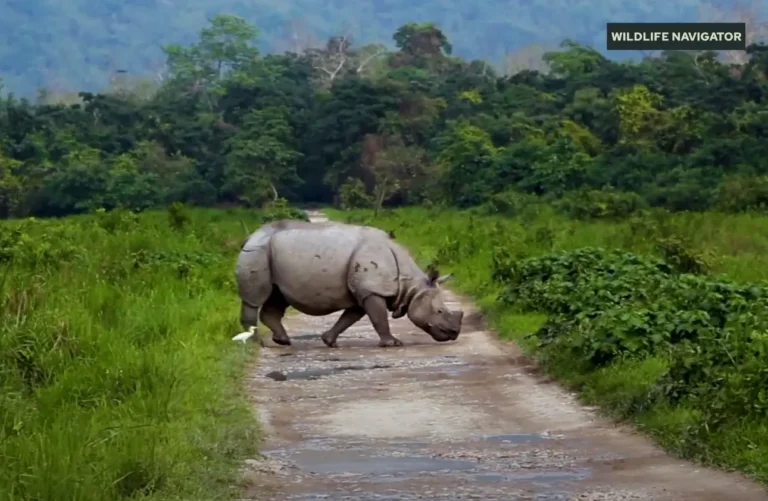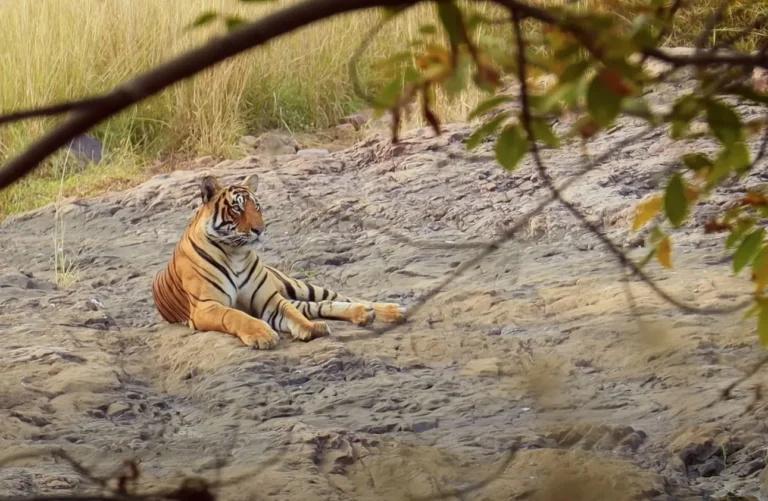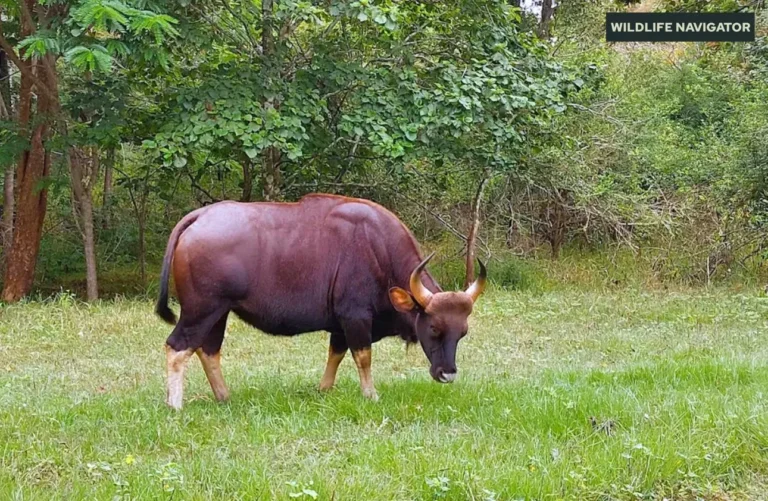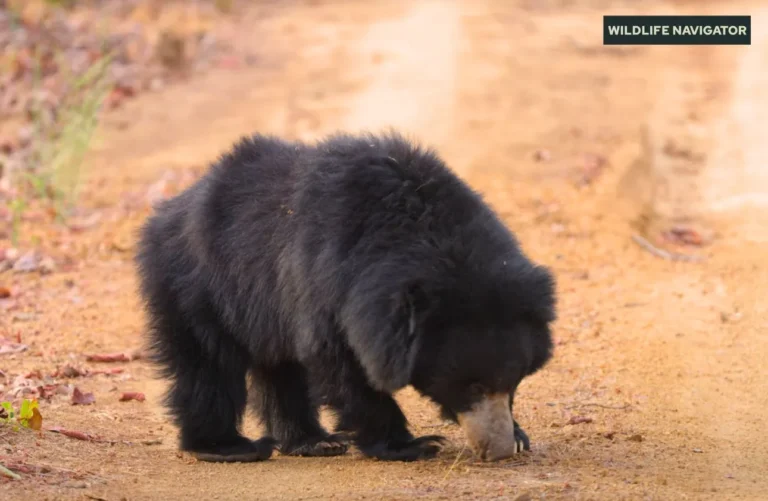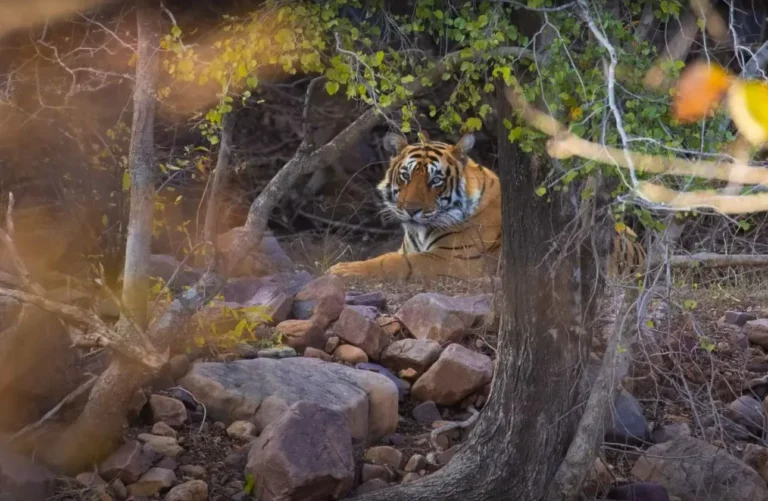Dhole (Asiatic Wild Dog): The Complete Guide to the Endangered Predator

The dhole (Cuon alpinus), also known as the Asiatic wild dog, Indian wild dog, or whistling dog, is one of the most remarkable predators in Asia’s forests. Despite its incredible adaptability and unique traits, the dhole remains one of the least understood carnivores in the world. Sometimes referred to as the red dog for its rusty-colored coat, this endangered species has captured the curiosity of wildlife biologists, conservationists, and nature enthusiasts alike.
Unlike wolves or jackals, the dhole belongs to a completely distinct genus, making it a rare and evolutionarily significant species among wild canids. What truly sets them apart is their pack-hunting behaviour and communication system. Instead of howling like wolves, dholes use high-pitched whistles, clucks, and screams to coordinate movements, earning them the nickname “the whistling dogs of Asia.”
Once widespread across Asia, from India and Nepal to Siberia and Indonesia, dholes now survive only in fragmented habitats. Human encroachment, prey depletion, and disease outbreaks have pushed this predator to the brink of extinction. Today, the dhole is listed as Endangered on the IUCN Red List, with fewer than 2,500 mature individuals believed to remain in the wild.
This guide explores the dhole in detail — from its physical traits, distribution, and behaviour to its ecological importance, conservation challenges, and cultural significance. Whether you’re a wildlife enthusiast eager to learn about the Indian wild dog, a traveller hoping to spot a wild dog in Asia, or simply curious about this mysterious predator, this comprehensive article will help you understand why the dhole is one of the most fascinating animals on Earth.
What is a Dhole?
The term “dhole” was popularised during British colonial times in India, but its origin remains uncertain. Some suggest it comes from the Kannada word tōḷa, meaning wolf. Locally, the animal goes by many names — “whistling dog” in English due to its shrill calls, “kuon” in Thailand, “asu” in Bhutan, and “kuon pa” in Laos.
Scientifically, the dhole is classified as:
- Kingdom: Animalia
- Phylum: Chordata
- Class: Mammalia
- Order: Carnivora
- Family: Canidae
- Genus: Cuon
- Species: Cuon alpinus
Unlike wolves (Canis lupus), jackals (Canis aureus), or African wild dogs (Lycaon pictus), the dhole belongs to a unique genus Cuon. This makes it an evolutionary relic — the only surviving species of its kind. Fossil records show that dholes once roamed across Europe, North America, and Asia, but today they survive only in Asia.
Physical Characteristics of Dhole
The dhole anatomy is perfectly designed for stamina-based hunting in forests and grasslands.
- Size & Build: Adult dholes measure 90–110 cm in body length, with tails around 40–50 cm. They stand about 50 cm tall at the shoulder and weigh between 12–20 kg. While smaller than wolves, their lean muscular build gives them endurance over long hunts.
- Coat Colour: Most dholes have a rusty-red coat, earning them the name red dog. Their underparts are lighter, and their bushy tail is often darker or black. In colder northern regions like Siberia and Mongolia, dholes may have paler, thicker winter coats.
- Facial Features: Rounded ears, amber eyes, and a fox-like expression make them instantly recognisable.
- Unique Traits: Dholes have only 40 teeth compared to 42 in wolves and domestic dogs, missing the last lower molars — an adaptation to their feeding ecology and diet.
These dhole physical traits give them a balance of speed, agility, and resilience, allowing them to thrive in dense forests where stealth and cooperation matter more than brute strength.
Dhole Distribution and Habitat
The dhole distribution once spanned much of Asia and Eurasia, but today they are restricted to fragmented populations.
- South Asia:
- Dhole in India: The largest remaining populations. Strongholds include Nagarhole, Bandipur, Tadoba, Kanha, Bandhavgarh, and Kaziranga National Parks.
- Dhole in Nepal: Survive in Chitwan and Parsa National Parks.
- Dhole in Bhutan: Found in temperate forests, sometimes overlapping with snow leopard and tiger habitats.
- Dhole in Bangladesh, Pakistan, Sri Lanka, Afghanistan: Now extremely rare or locally extinct.
- Southeast Asia:
- Dhole in Thailand, Laos, Vietnam, Cambodia: Present in scattered forest reserves but declining rapidly.
- Dhole in Myanmar: Survive in remote regions, but status is poorly studied.
- Dhole in Malaysia & Indonesia: Small, fragmented populations remain in Sumatra and Java.
- East Asia & Russia:
- Dhole in China: Restricted to Yunnan and Sichuan provinces.
- Dhole in Mongolia & Siberia (Russia): Extremely rare, surviving in cold montane forests.
- Dhole in Kazakhstan & Kyrgyzstan: Possibly extinct.
Preferred Habitats
- Tropical deciduous forests (India, Thailand)
- Montane and temperate forests (Bhutan, Nepal, Siberia)
- Grasslands and scrublands (occasionally)
The common denominator across all habitats is the availability of prey (deer, wild boar, gaur) and large contiguous forest tracts that support their pack-hunting lifestyle.
Dhole Behaviour and Social Structure
Few predators match the dhole’s cooperative behaviour and pack dynamics.
- Pack Size: Typically 5–12, though packs of 30+ have been recorded in prey-rich areas like Nagarhole (India).
- Hierarchy: Unlike wolves, dholes have a more relaxed social structure. Alpha pairs exist, but decision-making is often collective.
- Cooperation: Packs display remarkable teamwork — they hunt, raise pups, and share food collectively.
- Communication: Their nickname, whistling dog, comes from their repertoire of vocalisations — whistles, chatters, and clucks used to coordinate hunts and maintain group cohesion.
- Territorial Behaviour: Packs defend territories using scent marking and calls, though overlapping ranges occur where prey is abundant.
One striking aspect of dhole pack dynamics is their altruism. When feeding, pups and weaker individuals eat first, while stronger adults wait their turn. This rare cooperative feeding behaviour cements the dhole’s reputation as one of nature’s most social carnivores.
Dhole Diet and Hunting Strategies
The dhole diet primarily consists of medium-to-large herbivores, making it a true apex predator in its habitat. Common prey includes deer species such as sambar deer, chital (Spotted Deer), and muntjac, as well as wild boar, gaur, and occasionally livestock in regions where wild prey is scarce. Their feeding ecology is highly specialized, with packs working cooperatively to maximize hunting success.
Unlike solitary predators, dholes rely on pack-hunting strategies. They use stamina and teamwork rather than raw strength, chasing prey over long distances until exhaustion sets in. Smaller packs focus on vulnerable or sick animals, while larger packs can tackle adult deer or wild boar. The hunt is coordinated through dhole communication, including whistles, clucks, and screeches, which help synchronize attacks and prevent conflicts within the pack.
After a successful hunt, dholes practice cooperative feeding, allowing pups and weaker members to eat first. This social behaviour ensures pack cohesion and survival in the wild. By controlling herbivore populations, dholes play a critical role in maintaining forest health and ecosystem balance.
Reproduction and Life Cycle
The wild dog reproductive behaviour is a fascinating aspect of their highly social lifestyle. Breeding typically occurs once a year, often between November and March, depending on the region. Unlike many other canids, dholes rely on cooperative breeding, where the entire pack participates in raising and protecting the pups.
Gestation lasts around 60–63 days, after which the alpha female gives birth to a litter of 4–8 pups. Pups are initially blind and helpless, requiring constant care. All adult pack members contribute by feeding, guarding, and teaching the young how to hunt. This unique dhole pack dynamics ensures higher survival rates compared to solitary or less social predators.
Pups grow quickly, beginning to accompany adults on hunts within a few months. Sexual maturity is reached at around 1–2 years, and the typical lifespan of a dhole in the wild is 10–12 years, although in captivity they may live up to 15 years. The dhole’s social and reproductive strategies are vital for maintaining their populations, especially given the species’ endangered status and fragmented habitats.
Dhole vs Other Wild Canids
The dhole (Cuon alpinus) is often compared with other wild canids, yet it stands out due to its unique social structure, hunting strategies, and vocal communication. Understanding these differences highlights why dholes are ecologically significant and evolutionarily distinct.
Dhole vs Wolf:
While wolves are larger and generally live in rigid hierarchical packs, dholes are smaller, more agile, and exhibit flexible pack dynamics. Wolves rely heavily on howling to communicate, whereas dholes use high-pitched whistles, clucks, and screeches, earning them the nickname whistling dogs. Wolves hunt cooperatively, but dhole packs display more sophisticated coordination, often targeting weaker or sick prey to maximise hunting efficiency.
Dhole vs African Wild Dog:
Both species are pack-hunting wild dogs, but African wild dogs inhabit savannas and open woodlands, whereas dholes are primarily forest dwellers across Asia. African wild dogs have larger packs and distinctive coat patterns, while dholes have uniform reddish coats. Both species are highly social, but dholes rely more on stealth and endurance than sheer speed.
Dhole vs Jackal:
Jackals are mostly solitary or live in pairs and are opportunistic scavengers, whereas dholes are apex predators that hunt cooperatively in packs. Jackals rarely target large prey, while dholes can take down animals many times their size.
In addition to ecological differences, dhole interspecies interactions are important. Dholes often share territories with tigers, leopards, and bears, avoiding direct competition through clever hunting strategies and coordinated pack movements. This adaptability demonstrates the dhole’s crucial role in maintaining ecosystem balance across its range.
Interesting Dhole Facts
- Known as the whistling dog for its high-pitched vocalisations.
- Packs can take down prey 10 times their size, such as deer or wild boar.
- Cooperative hunters: share food with pups and weaker members first.
- Historically, it ranged from Siberia to Indonesia, one of the widest distributions among wild canids.
- Rarely dangerous to humans, despite myths in folklore.
- Play a key role as apex predators and keystone species, supporting forest biodiversity and ecosystem health.
Best Places to See Dholes in the Wild
Spotting a dhole in the wild is a rare and exciting experience for wildlife enthusiasts, photographers, and travellers. These elusive Asiatic wild dogs inhabit dense forests and protected reserves across Asia, where conservation efforts have helped maintain stable populations.
India is the best destination for observing dholes:
- Nagarhole National Park (Karnataka): Dense forests and large prey populations make sightings frequent.
- Bandipur National Park (Karnataka): A stronghold of dholes with healthy packs often observed near waterholes.
- Kanha & Tadoba (Madhya Pradesh & Maharashtra): Known for sightings of pack-hunting wild dogs alongside tigers and leopards.
- Bandhavgarh & Kaziranga (Madhya Pradesh & Assam): Protected areas where dholes thrive in natural habitats.
Nepal and Bhutan:
- Chitwan National Park (Nepal) and forested regions of Bhutan offer rare opportunities to see dholes in Himalayan foothills.
Southeast Asia:
- Thailand, Laos, Vietnam, and Cambodia host scattered populations in protected forests like Huai Kha Khaeng Wildlife Sanctuary and Nam Et-Phou Louey.
Russia and Mongolia:
- Northern populations exist in remote Siberian forests, though sightings are extremely rare due to harsh terrain and small numbers.
Wildlife tourism and photography play a crucial role in dhole conservation education, raising awareness of their endangered status and ecological importance. Observing dholes in the wild not only provides a unique wildlife experience but also highlights the importance of protecting these pack-hunting wild dogs and their habitats.
Importance of Dhole in Ecosystems
The dhole role in ecosystem health is vital. As a pack-hunting wild dog and apex predator, dholes help maintain the balance between herbivores and vegetation. Their hunting patterns regulate prey populations, preventing overgrazing and promoting forest health. By controlling the number of deer, wild boar, and other herbivores, dholes indirectly support biodiversity and ecosystem stability.
Key contributions of dholes include:
- Prey population control: Prevents overpopulation of herbivores like sambar and chital.
- Biodiversity support: By managing prey numbers, they allow vegetation and smaller species to thrive.
- Disease regulation: Dholes often target weaker or sick animals, helping control disease spread in prey populations.
- Keystone predator role: Their presence influences the behaviour and distribution of other predators, including tigers and leopards.
Without dholes, ecosystems risk becoming unbalanced, leading to overgrazing, declining forest health, and increased human-wildlife conflicts. Protecting this endangered wild dog is therefore crucial not only for the species itself but for the survival of entire Asian forest ecosystems.
Dhole and Human Interactions
The dhole has had a complex relationship with humans throughout history. While generally shy and elusive, dholes in India, Nepal, and Southeast Asia sometimes come into conflict with humans, especially when livestock is scarce. Their tendency to hunt domestic animals can lead to retaliatory killings, posing a significant threat to their populations.
Despite this, dholes have long held a place in folklore and culture:
- In India and Bhutan, dholes symbolise teamwork and courage.
- Appearing in literature and wildlife documentaries, they are celebrated for their cooperative hunting skills.
- Wildlife tourism and photography increasingly highlight dholes as an exciting species to observe in protected areas.
Promoting coexistence through education, livestock protection, and conservation programs is essential to reduce human-wildlife conflict and safeguard this endangered wild dog for future generations.
Threats to Dhole Survival
The dhole population decline is a serious conservation concern. Once widespread across Asia, these endangered wild dogs now survive only in fragmented habitats due to multiple threats. Their specialised behaviour, social structure, and dependence on prey make them particularly vulnerable.
Major threats include:
- Habitat loss and fragmentation: Deforestation, agriculture, and urban expansion reduce dhole habitat and isolate packs.
- Prey depletion: Overhunting of deer, wild boar, and other herbivores leaves dholes without sufficient food.
- Human-wildlife conflict: Retaliatory killings occur when dholes prey on livestock.
- Disease transmission: Rabies, canine distemper, and parvovirus from domestic dogs can devastate wild populations.
- Poaching and illegal hunting: While not a primary target, dholes are sometimes caught in traps meant for other animals.
- Genetic bottlenecks: Small, isolated populations suffer inbreeding, reducing genetic diversity and resilience.
Without immediate action, these threats could lead to further declines in dhole numbers, affecting not only the species itself but also the ecosystem balance, as dholes play a key role as apex predators and keystone species.
Conservation Status
The dhole (Cuon alpinus) is currently listed as Endangered on the IUCN Red List, with an estimated 2,500 or fewer mature individuals remaining in the wild. Populations have drastically declined due to habitat loss, prey depletion, disease, and human conflict.
Strongholds of the species exist in protected areas across Asia, including:
- India: Nagarhole, Bandipur, Kanha, Tadoba, Bandhavgarh, Kaziranga
- Nepal: Chitwan and Parsa National Parks
- Bhutan and Thailand: Remote forest reserves
- Russia and Mongolia: Fragmented northern populations
Despite legal protection in several countries, including India’s Wildlife Protection Act, the dhole faces ongoing challenges such as habitat fragmentation, small population sizes, and lack of public awareness. Monitoring, research, and conservation programs are essential to prevent further decline and ensure the survival of this endangered wild dog across its native range.
Dhole Conservation Efforts
Conservation of the dhole focuses on protecting habitats, reducing human-wildlife conflict, and maintaining prey populations. Efforts include:
- Protected areas: Indian tiger reserves, Bhutanese and Thai forests
- Legal protection: Wildlife Protection Act and IUCN guidelines
- Community programs: Livestock compensation and education
- Research & monitoring: Tracking populations and studying dhole behaviour
- Captive breeding & reintroduction: Limited programs to boost numbers
These initiatives aim to secure viable populations and maintain the dhole’s role as an apex predator in Asian ecosystems.
Future of Dhole Conservation
The future depends on strong conservation measures across Asia. Protecting habitats, restoring prey populations, and reducing human-wildlife conflict are critical. Initiatives like protected areas, community programs, and captive breeding aim to stabilise populations. International collaboration, research, and awareness campaigns are essential to secure viable dhole populations. Preserving the dhole ensures the survival of a keystone predator that maintains forest health, biodiversity, and ecological balance across its range.
Conclusion
The dhole (Cuon alpinus), also known as the Asiatic wild dog, Indian wild dog, or whistling dog, is one of Asia’s most remarkable and endangered predators. With its unique pack-hunting behaviour, social structure, and vocal communication, the dhole plays a critical role in maintaining ecosystem balance and supporting biodiversity.
From the forests of India, Nepal, and Bhutan to the remote landscapes of Southeast Asia and Siberia, dholes are a keystone species whose survival is vital for healthy prey populations and forest health. Threats such as habitat loss, prey depletion, disease, and human conflict have pushed this species to the brink, making conservation efforts more important than ever.
By protecting dhole habitats, promoting coexistence with humans, and supporting conservation programs, we can ensure that future generations witness the incredible pack-hunting wild dogs thriving in their natural environments. The dhole is not just a predator—it is a symbol of Asia’s wild heritage.
